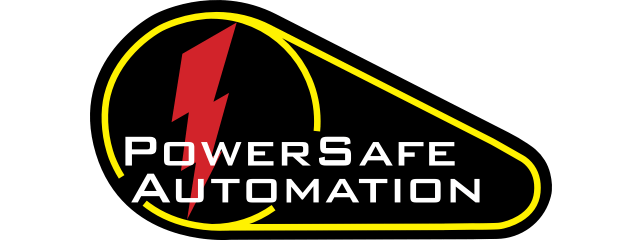In today's manufacturing environment, safety can't be an afterthought or separate consideration from operations. As regulations tighten due to a continued rise in workplace accidents and production demands increase, plant managers and project engineers need safety solutions that enhance efficiency while keeping operators safe.
This is where integrated safety controls come into play. Unlike traditional safety approaches that exist as separate systems, integrated safety controls work seamlessly with your control system to create a unified solution that protects operators without sacrificing productivity.
What Are Integrated Safety Controls?
Integrated safety controls are built-in redundant safety systems that work seamlessly with your existing machinery to prevent accidents and injuries during operation. Unlike external safety devices or bolt-on solutions, these controls are part of the equipment itself, creating a seamless integration between safety and performance.
Integrated safety allows for safe zones and selective shutdowns, meaning your operations don't come to a grinding halt when safety events occur. This approach means fewer interruptions and faster restarts.
Essential Components of Integrated Safety Systems
A comprehensive integrated safety solution typically includes several key components working together:
- Emergency Stop (E-Stop) Buttons: These instantly shut down a machine in case of emergency, providing operators with immediate control when a hazardous situation occurs.
- Light Curtains: These infrared beams create protective, invisible barriers around hazardous areas. When the beam is interrupted, the machine automatically stops, preventing access to dangerous zones while maintaining operational visibility.
- Safety Interlock Switches: These ensure machines cannot operate unless all guards or doors are properly closed. Available in mechanical, magnetic, or RFID-based configurations, they provide reliable protection against unauthorized access.
- Two-Hand Controls: By requiring operators to press two buttons simultaneously, these controls keep both hands away from danger zones during machine operation.
- Safety Mats and Area Scanners: Pressure-sensitive mats and laser-based area scanners detect personnel presence in dangerous zones and trigger appropriate safety responses, creating flexible yet secure work environments.
The Integrated Safety Response Chain
Having an understanding of how these systems work together can help you get a sense of their effectiveness:
- Signal Interruption: When a safety barrier is breached—like a light curtain being interrupted—the system immediately sends a signal to the safety controller.
- Safety Controller Response: The controller evaluates the signal and determines if a safety breach has occurred.
- Safety Outputs De-energize: The controller de-energizes output contacts, cutting power to hazardous motion components.
- PLC Involvement (if Applicable): The main programmable logic controller (PLC) also receives a signal that a safety event has occurred.
- Machine Stops Safely: With power removed, the machine comes to a controlled stop according to predefined safety protocols.
- Visual/Audible Alerts: Stack lights or alarm buzzers activate to notify operators that a safety breach has occurred.
- Manual Reset Required: Once the safety event has been resolved, the machine requires manual reset before resuming operation, acknowledging the event and validating that the area is now safe.
Our Approach to Integrated Machine Safety
At Power Safe, we take a comprehensive approach to machine safety that goes beyond simply providing products. Rather than replacing your entire control system, we build on what's already there ensuring:
- Compatibility with legacy PLCs or control panels
- Clear segmentation between standard and safety control logic
- Reliable diagnostics and remote reset capabilities
- Efficient wiring and enclosure design
This approach results in faster installations and less downtime, allowing you to maintain productivity while enhancing safety.
As manufacturing facilities continue to evolve, integrated safety controls remain essential for both worker well-being and operational efficiency. By choosing professional safety solutions over DIY approaches, you're not just checking a compliance box, you're investing in a comprehensive system that protects your workforce while optimizing performance.
Ready to enhance your facility's safety and efficiency with integrated safety controls? Contact us today to learn how Power Safe can help you create a safer work environment with our comprehensive safety solutions.



